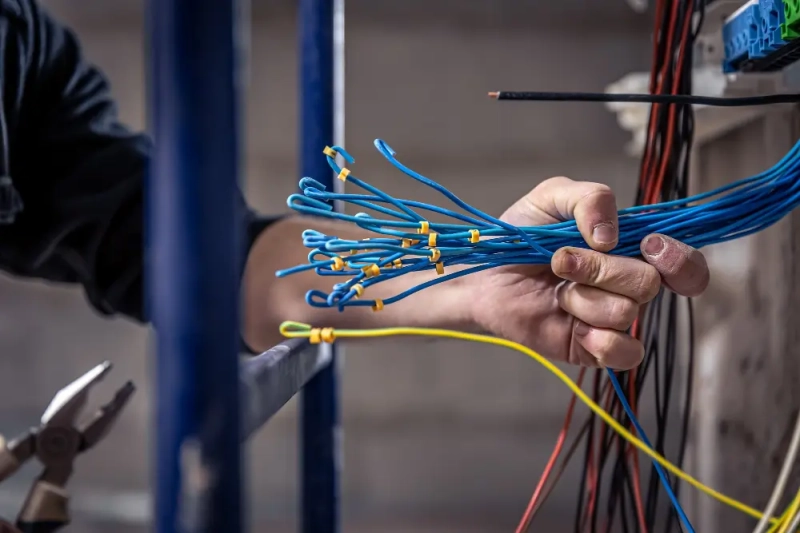
Uninterruptible Power Supply Maintenance

An uninterruptible power supply (UPS) is a system used to provide energy during power outages. These systems ensure the continuous supply of electrical power and guarantee the uninterrupted operation of critical devices. UPS maintenance is an important step to ensure the proper functioning and reliability of UPS systems.
What is an Uninterruptible Power Supply?
An uninterruptible power supply (UPS) is a device used to provide continuous power during power outages. This system takes electrical energy from sources such as backup batteries or generators and instantly activates them to provide energy to connected devices. The UPS system prevents sensitive electronic devices from suddenly losing power and prevents data loss or damage that may occur as a result.
Importance of UPS System
The UPS system ensures the continuous operation of critical systems in many industries. For example, medical devices in hospitals, data centers in banks, computer networks and communication systems depend on UPS systems. Power outages can cause serious problems for such systems and can even be life-threatening. Therefore, it is important to have and regularly maintain an uninterruptible power supply.
Working Principle of UPS System
A UPS system consists of a series of components to transfer energy from the power grid to devices at the correct voltage and frequency. A typical UPS system includes a rectifier, battery, inverter and automatic transfer switch. Electrical energy comes from the grid and is converted into direct voltage by the rectifier. This energy is routed to the battery and stored. In the event of a power failure, the inverter is activated and converts the energy from the battery into alternating current to power the connected devices. When the electrical energy returns to the grid, the automatic transfer switch is activated and the devices are fed from the grid power again.
Importance of Uninterruptible Power Supply Maintenance
Uninterruptible power supply maintenance is essential to ensure continuous and reliable operation of the UPS system. This maintenance keeps the system running smoothly and minimizes the risk of failure. At the same time, maintenance extends the life of the UPS system and allows it to be used more economically.
Purpose of Maintenance
The main purpose of uninterruptible power supply maintenance is to detect and prevent potential failures in the system, to check components regularly and to ensure the reliability of the UPS system. Maintenance should be carried out at regular intervals and records should be kept. Thus, the operation of the system can be monitored and necessary measures can be taken.
Benefits of Maintenance
Uninterruptible power supply maintenance has many benefits. Regular maintenance provides the following benefits:
- Reduces the risk of failure: Maintenance operations help identify potential failure points and prevent potential failures in the system.
- Increases efficiency: Maintenance ensures efficient operation of the UPS system and optimizes energy consumption.
- Extends lifespan: Regular maintenance extends the life of the UPS system and reduces the cost of spare parts.
- Ensures reliability: Maintenance ensures continuous and reliable operation of the system, thus protecting against power outages.
K Care and Maintenance of a Breeze-Free Power Supply
There are some important factors to consider when maintaining an uninterruptible power supply. These should be taken into account to ensure proper operation of the system and minimize the risk of failure.
Importance of Planned Maintenance
Scheduled maintenance is a maintenance program that is organized at regular intervals. This type of maintenance ensures that the UPS system is checked regularly and necessary measures are taken.
Prevention of malfunctions: Planned maintenance operations help to identify potential failures and take action to ensure proper system operation.
Optimizing performance: Scheduled maintenance optimizes the performance of the UPS system and minimizes energy consumption.
Preventing data loss: Scheduled maintenance ensures continuous operation of the UPS system and thus prevents data loss.
UPS System Controls
When maintaining the uninterruptible power supply, it is important to check the system regularly. The following inspection steps should be considered:
Visual Inspection: The UPS system should be visually inspected and checked for any physical damage or leaks.
Cable Connections: Cable connections should be tight and loose connections should be corrected.
Air Flow: Airflow around the UPS system should be checked and cleaned as necessary.
Noise Levels: Noise levels of the UPS system should be monitored and action taken as necessary.
Instrument Panel: The instrument panel of the UPS system should be inspected and any faults message or warning should be checked.
Battery Replacement and Tests
It is important to regularly check the batteries in the UPS system and replace them when necessary. The following steps should be considered in battery maintenance:
Battery Testing: Batteries should be tested periodically to evaluate their performance. These tests include checking the capacity and state of charge of the batteries.
Battery Replacement: Batteries run out of life after a certain period of time. Therefore, it is important to replace the batteries regularly. Old or weak batteries can negatively affect the performance of the system and may not provide enough power in the event of an outage.
Battery Maintenance: Keeping batteries clean and dry prolongs their life. Battery cleaning and protective measures should be taken when necessary.
Software Updates
It is also important to keep the UPS system software up to date. Software updates improve system performance and reliability. In addition, software updates make new features and enhancements available. The UPS manufacturer's recommended software update procedures should be followed.
How to Maintain an Uninterruptible Power Supply?
Uninterruptible power supply maintenance should be performed at regular intervals and a schedule or maintenance plan should be established. The following describes the basic steps of uninterruptible power supply maintenance:
Periodic Maintenance
Visual Inspection: The UPS system should be visually inspected and checked for any damage or leaks.
Cable Connections: Cable connections should be tight and loose connections should be corrected.
Battery Tests: Batteries should be tested for capacity and state of charge.
Instrument Panel Check: The instrument panel of the UPS system should be examined and any error messages or warnings should be checked.
Air Flow Check: The airflow around the UPS system should be checked and cleaned as necessary.
Software Updates: The UPS system software should be kept up to date. Emergency Maintenance
Power Failure Simulation: The UPS system should be tested by simulating a power failure. This test aims to check that the system is functioning correctly and is reliably supplying power to the connected devices.
Automatic Transfer Switch Check: The automatic transfer switch should switch the system from mains power to battery power in the event of a power failure. This switchover must be checked to ensure that it occurs correctly.
Alarm Tests: The alarm systems in the UPS system should be tested and checked to ensure that they are functioning correctly.
Result
Uninterruptible power supply maintenance is important to ensure system reliability, reduce the risk of failure and extend the life of the UPS system. Regular scheduled maintenance and battery checks keep the system running smoothly. It is also important to keep track of software updates and perform emergency testing. Uninterruptible power supply maintenance is critical for business continuity and should be performed regularly to ensure reliable power supply.
 Türkçe
Türkçe English
English Russian
Russian
 Web Tasarım Tarafından Hazırlanmıştır.
Web Tasarım Tarafından Hazırlanmıştır.